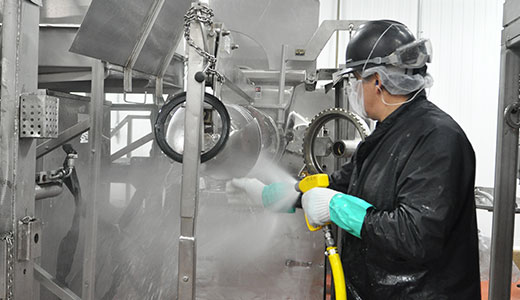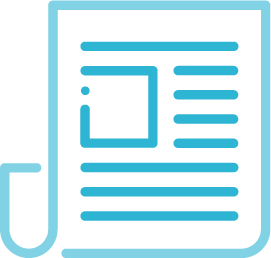Posted by Zosi Team

In the food production industry, the Global Food Safety Initiative, or GFSI, performs audits that act as unbiased, independent evaluations of food safety and quality systems.
This reassures the public that the source of their food is looking out for their best interests and trying to avoid product recalls. Audits provide brief snapshots in time that inform vital decisions in the food safety and quality of the business. A successful audit provides assurance that the company can sell the product to customers with minimized risk. An unsuccessful audit, however, identifies opportunities for improvement within the organization and shows where food safety might be lacking. By knowing the most common non-conformances, you can look at your own food safety program and see where you have room for growth.
Top Audit Non-Conformances
One of the top major non-conformances for SQF audits is related to a requirement for a food fraud program. Clause 2.7.2.1 mandates that you have to assess both your site and your raw material’s vulnerability to food fraud. The primary reason for non-conformances in this area is typically related to the food fraud program inadequately addressing all that it needs to. To avoid non-conformances based on this clause, document and maintain your Mitigation Plan to reduce risks. Review your program at least annually and schedule updates as needed. There are several tools to ensure that your food fraud program is successful: PWC Vulnerability Assessment, Food Fraud Database, and Horizon Scan provide supporting documentation.
The second major non-conformance is a recent update to edition eight, with a requirement for environmental monitoring programs. Every facility is now required to have a risk-based environmental monitoring program. Make sure that you perform risk assessments and test adequately for environmental pathogens. When you have completed the risk assessment, you can evaluate the results to determine which hazards to monitor. Your written program also needs to specify the sampling and testing schedule, as well as the number of samples to be taken and the frequency of sampling. Survey the plant to find sampling sites and designate the frequency based on risk. You can further justify the sampling by following regulatory, trade association, or scientific guidelines. The USDA and FDA both provide supporting guidance documents to justify sampling frequency. Some trade associations, such as the American Frozen Food Institute, also provide helpful compliance guidelines. Maintain thorough records for sampling and corrective actions after adverse results. By keeping adequate records, you can study the results to find a trend analysis and address any findings to improve future audit results.
Cleaning and sanitation are a vital part to any audit’s success. To ensure that you perform well in this area, double-check your written Sanitation Standard Operating Procedure program, or SSOP. Every SSOP should address the appropriate cleaning procedures for all major pieces of equipment in your facility. Within this documentation, you should also address the verification procedure for sanitation effectiveness. Include a visual pre-op inspection, as well as different types of either ATP or total plate count testing to verify that you’ve removed the soil and microbial loads from the equipment.
Next, be sure to address the critical control point or preventive control monitoring procedures. Be sure to perform preventive control monitoring procedures at the frequency designated in the food safety plan, in the manner in which it is outlined. When documenting preventive control monitoring, include an explanation for why you chose the critical control points that you did, and the critical limits to demonstrate that they will effectively control the identified hazards. To further support this portion of the audit, prepare your CCP monitoring and verification personnel to adequately respond in interviews. Ensure that they can confidently explain their responsibilities and how they fulfill recordkeeping requirements. Perform annual reviews to verify your CCP records for completion and accuracy.
Beyond critical control points, it is also crucial to address pest prevention. Two of the top ten major non-conformances are related to pest prevention programs and pest activity. By implementing an effective pest prevention program, you can limit the non-conformances for both clauses 11.2.12.2 and 11.2.12.1. Evidence of pest activity, whether rodents, roaches, ants, or any other type of pest, leads to major non-conformances on your audit. If you feel you are unable to manage pest control yourself, you may want to use an outside pest control organization. If you do choose to manage this externally, be sure to verify that they’re doing everything that you’ve outlined within your program.
Another major non-conformance is classified under clause 2.5.5.1 for internal audits and inspections. For internal audits other than the SQF system audit, there are two different components: one for the SQF system, the other for plant inspections. To prevent this non-conformance, keep a checklist to show that you are auditing all elements of the code. Be sure to perform an annual review to maintain compliance with this clause, as well.
Validation and Effectiveness are other factors in major non-conformances. Clause 2.5.1.1 speaks specifically to the validation of good manufacturing practices and critical limits associated with critical control points or preventive controls in the food safety plan. To avoid a non-conformance in this portion of the code, validate changes within the SQF system any time you have new products, changes in raw materials, or new equipment changes with a process that adequately demonstrates you’ve performed SQF system verification and validation.
During the Process
While you are being audited, if you identify a non-conformance, there are ways to address it. Communicate closely with the Auditor throughout the process. This helps you understand the nature of the non-conformance and dispute it if you do not agree after the Auditor explains the issue. Take before and after pictures of non-compliant areas so you can show further proof when taking corrective actions later. Be sure to correct non-conformances as soon as possible and point them out to the Auditor. By taking quick corrective action, you demonstrate your commitment and sponsorship. Ask the Auditor to review results each day in an exit meeting. Daily meetings during the audit ensure that you are in agreement with any nonconformances that have been identified. Assess your ratings in the final exit meeting.
After the Audit
Meet with your Food Safety Team and work directly with them to establish appropriate corrective actions for each non-conformance. Investigate each non-conformance and establish the root cause for its deviation from the standard regulation. Each non-conformance should have a Corrective Action and Preventive Action (CAPA) record that goes with it to support actions to be taken to correct the non-conformance, as well as future actions to prevent the irregularity from occurring again. Each certification body has Corrective Action Forms for submission on or before a date set by the Auditor. After you have completed all appropriate records, follow up with the Auditor to ensure that the non-conformances have been closed. While it is not recommended, you can file an appeal if you have a strong dispute with the type of non-conformance. Any appeals, however, will affect your overall audit score, so do this with extreme caution.
In Conclusion…
With regular monitoring of systems that you have in place, you can avoid many non-conformances and ensure that you perform well on any audit—announced or unannounced. Review procedures and meet with your food safety team and SQF practitioner regularly to make sure that all team members are ready, even at a moment’s notice. Regular training also improves performance by refreshing everyone’s memory and keep processes on track.
Zosi provides online training that lets your employees train at their own pace, on site. If you are at all able, use a third party for reassessment. By using external individuals, you can get impartial feedback on processes and get recommendations for any changes that might need to be made during the annual reassessment process. Know your team, processes, and facility so there aren’t any surprises when you are faced with an audit. Minimize unused equipment, and don’t allow contractors on days when you do have audits. By limiting external factors, you reduce the chance that a non-conformance will be identified.


 Corrective and Preventive Action (CAPA) Fundamentals
Corrective and Preventive Action (CAPA) Fundamentals

